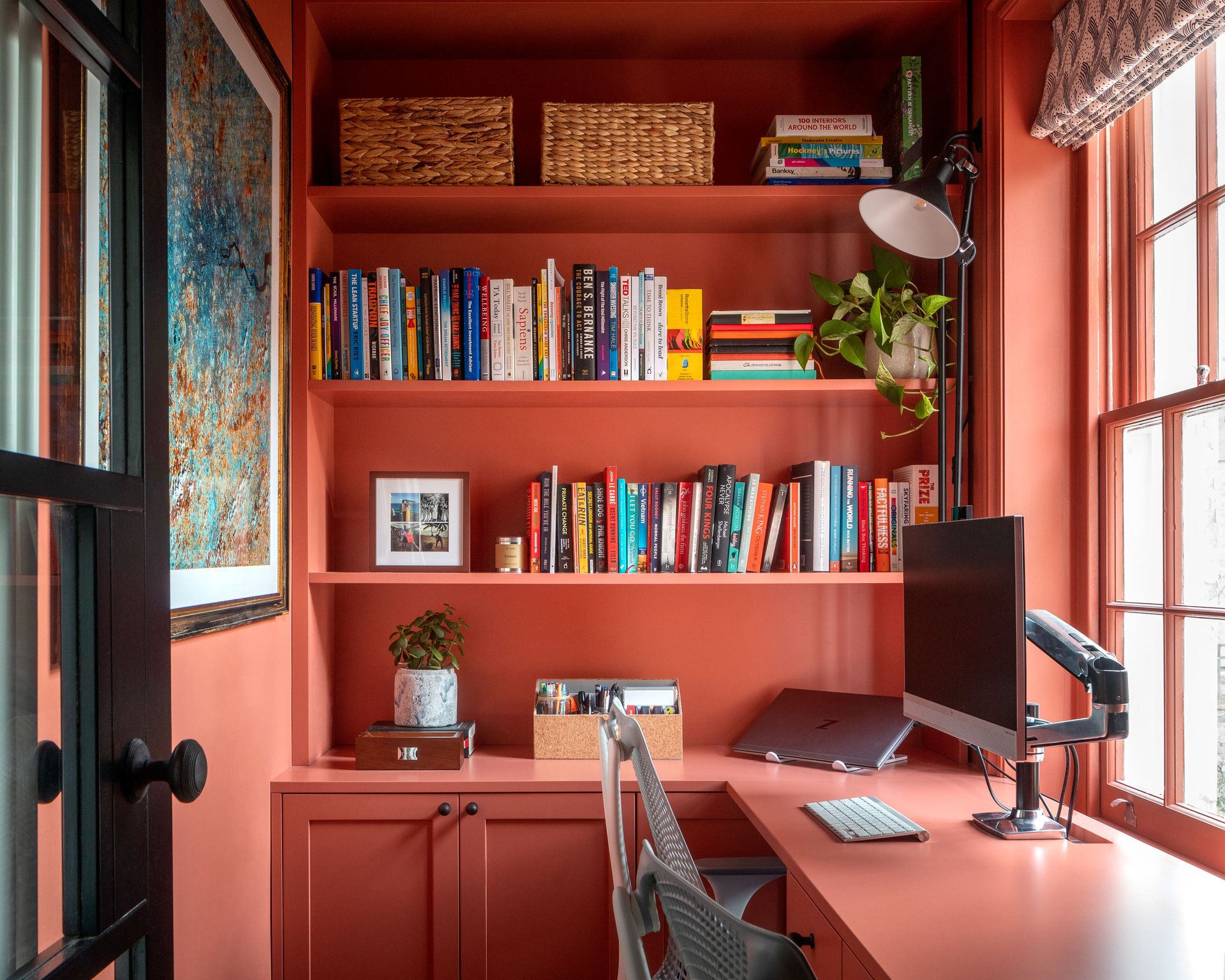How to clean a laptop screen - the secrets you never you needed to improve your home and work life
Learn how to clean a laptop screen safely and without causing any damage and make home working way nicer to do


Knowing how to clean a laptop screen safely is an extremely important skill given their delicate nature and tendency to be dust magnets. Don’t think your laptop screen needs a clean? Load up this completely black image in a new tab and then see if you still believe that to be true.
You may be nervous about cleaning your laptop screen given the delicate nature of electronics, but as long as you follow the tips below and apply a light touch, you should be fine. But first, some things to avoid doing at all costs:
How to clean a laptop screen: What not to do
- Don’t use paper towels or tissue paper
Paper towels or tissue paper may seem soft enough for screens, but they’re actually surprisingly abrasive. As outlined below, a microfiber cloth is best.
- Don’t use window cleaner or highly concentrated alcohol
It may instinctively make sense to use window cleaner on your laptop screen, but it’s a really bad idea. Cleaning agents often found in window cleaners and degreasers can corrode the coating of your screen, potentially making things worse and removing your display’s built-in protections. In short, you may get away with it once or twice, but it’s asking for trouble and best avoided.
Highly concentrated rubbing alcohols are also not recommended for the same reason. On its site, Apple says a 70% isopropyl or 75% ethyl alcohol wipe can be used safely but if you’re using your own rubbing alcohol we’d play it safe and mix it 50/50 with distilled water (not tap, as that can contain abrasive minerals).
- Don’t spray any kind of cleaner directly onto the screen
You may be able to avoid any kind of liquid for light smudges, but if you need water or diluted alcohol, avoid spraying it directly onto the screen, as that’s a recipe for liquid damage if it somehow leaks through a gap or drips down onto the keyboard.
Instead, spray the cleaning solution directly into the microfiber cloth. Remember that a little goes a long way, and while it’s easy to add more if you need, it’s a lot harder to wring-out a waterlogged cloth.
With all that in mind, what should you do? Here’s how to clean a laptop screen without causing any damage.
How to clean a laptop screen: What you’ll need

So, we’ve covered what you shouldn’t use. What should you have in your laptop screen cleaning arsenal?
The main tool you’ll need is a microfiber cloth. Glasses wearers will be familiar with these: they’re extremely soft bits of fabric designed to remove dust and debris without causing any scratches on delicate surfaces. This $12.99 pack of 12 microfiber cloths from Amazon has over 50,000 reviews and 95% of them are four stars or higher.
If you’re trying to get rid of something a bit more tricky, you can try a sponge. But make sure it’s a new one, because you don’t want to make things worse.
Then there’s the cleaning materials, if required. As mentioned above, tap water won’t cut it: the minerals involved can cause scratches and, frankly, it isn’t worth the risk. Get distilled or filtered water instead.
If you need something more heavy-duty, isopropyl alcohol is your friend. But the percentage is important: look for a solution like this one from Amazon, which is 70% or lower, and if you want to be super safe, you may want to dilute it with the aforementioned distilled water too.
How to clean a laptop screen: Removing dust
For dust, you shouldn’t need anything more than your trusty microfiber cloth.
- Shut your laptop down, so you can see clearly where the dust is.
- Gently press the microfiber cloth onto the screen, wiping across in a single direction to collect all the dust.
How to clean a laptop screen: Cleaning up dirt

If just the microfiber cloth isn’t enough, try this.
- Shut down your laptop and unplug it from the mains. If the battery is removable, you may want to take it out to be safe, as we’ll be working with water.
- Take a brand new sponge and wet it with your distilled or filtered water. Wring it out so that it’s damp, rather than soaked.
- Gently apply the sponge to the problem area(s), moving in circular motions. If you drip, clean this up right away.
- Once clean, allow your screen to air dry before closing the laptop lid or turning it back on.
How to clean a laptop screen: More heavy-duty cleaning
If distilled water wasn’t enough to clean your laptop screen, it’s time for the big guns: isopropyl alcohol. Remember, only use 70% or lower, and you may want to dilute it with distilled water to be safe.
- Turn off your laptop and unplug it from the mains. Again, if possible take out the battery, though modern laptops frequently take this option away.
- Apply your cleaning solution to a microfiber cloth.
- Rub the cloth in small circles on the dirty area. Don’t press too hard.
- Once the dirt is gone, leave the laptop open to air dry before closing the lid or turning it back on.
Be The First To Know
The Livingetc newsletter is your shortcut to the now and the next in home design. Subscribe today to receive a stunning free 200-page book of the best homes from around the world.
Freelance contributor Alan has been writing about tech for over a decade, covering phones, drones and everything in between. Previously Deputy Editor of tech site Alphr, his words are found all over the web and in the occasional magazine too. He often writes for T3 and Tom's Guide. When not weighing up the pros and cons of the latest smartwatch, you'll probably find him tackling his ever-growing games backlog. Or, more likely, playing Spelunky for the millionth time.
-
 How to Thaw a Frozen Pipe — Learn Everything You Need to Know in 5 Minutes With This Guide
How to Thaw a Frozen Pipe — Learn Everything You Need to Know in 5 Minutes With This GuideWinter storm caught you off guard? We asked an expert — just how do you thaw a frozen pipe?
By Hugh Metcalf Published
-
 The 12 Very Best Silk Bedding Pieces — As Our Style Editor Says: 'It's What Dreams Are Made Of!'
The 12 Very Best Silk Bedding Pieces — As Our Style Editor Says: 'It's What Dreams Are Made Of!'Slumber in lustrous luxury with the very best silk bedding sheets, duvets, pillowcases, and more — your sleep score will thank us later
By Julia Demer Published

